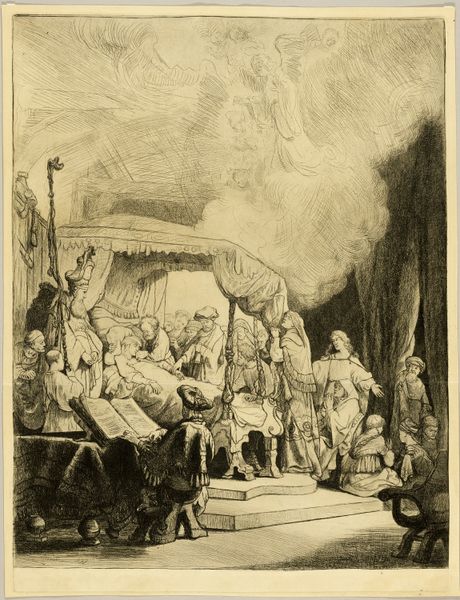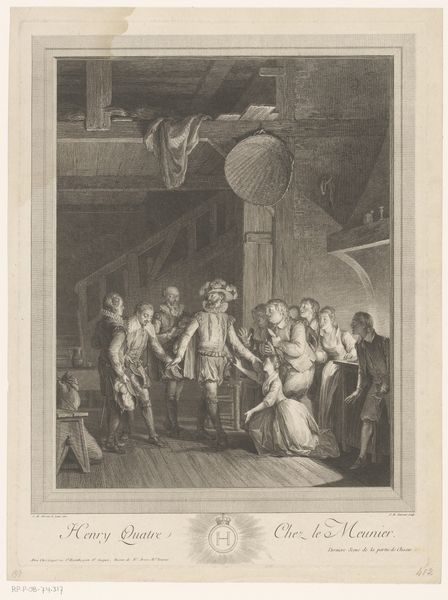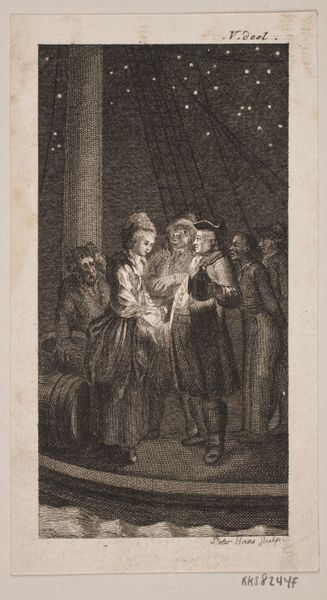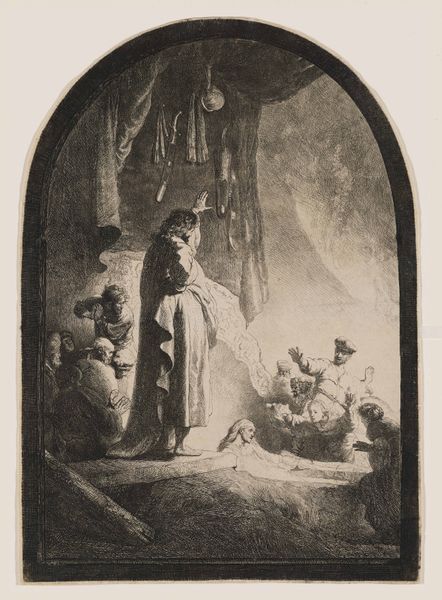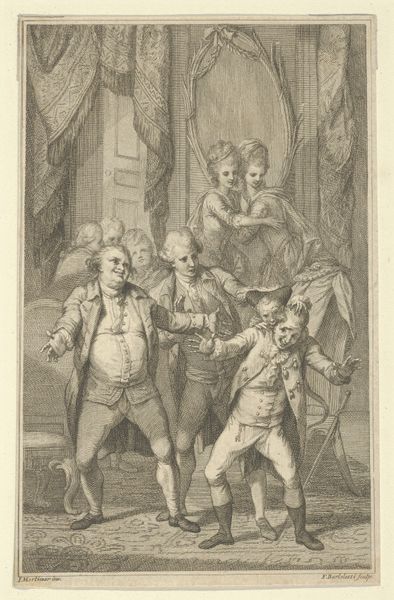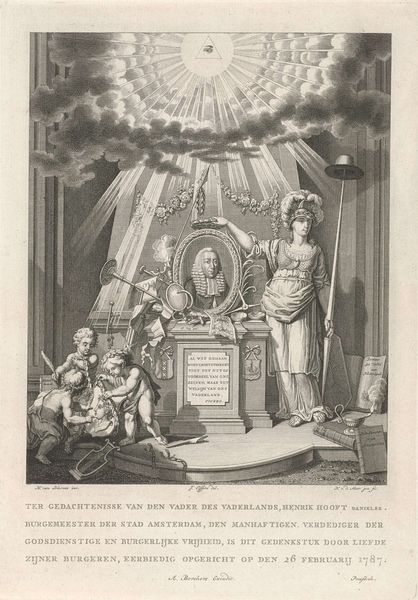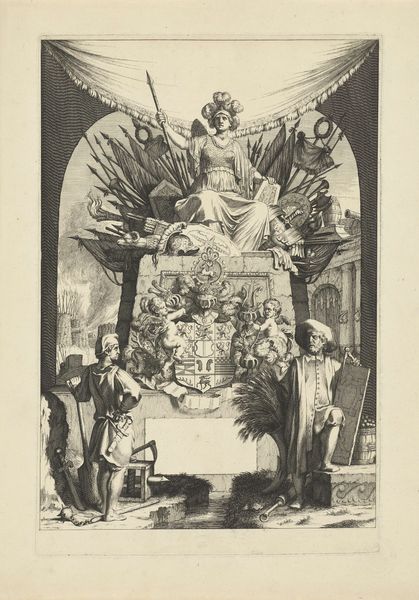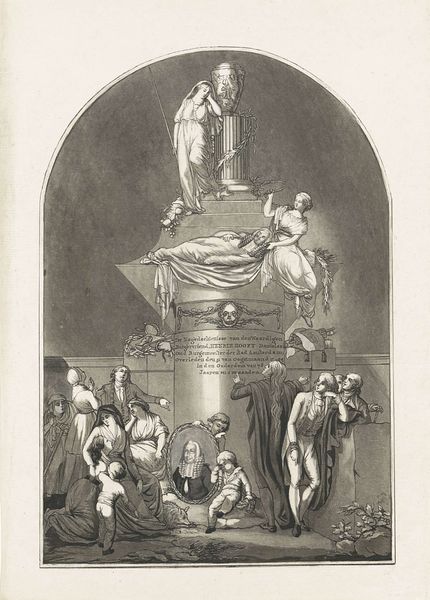
drawing, print, engraving
#
portrait
#
drawing
#
neoclassicism
# print
#
group-portraits
#
19th century
#
men
#
history-painting
#
engraving
#
watercolor
Dimensions: Sheet (trimmed to plate): 24 7/16 × 17 1/2 in. (62 × 44.5 cm)
Copyright: Public Domain
Curator: The print before us is titled "Garrick Speaking the Jubilee Ode," made in 1784 by Caroline Watson after a design by B.T. Pouncy. It commemorates David Garrick's performance at the Shakespeare Jubilee in 1769. What’s your first reaction? Editor: Well, it’s certainly dramatic! The swirling smoke, the theatrical figures, it’s all very staged. Almost like a fever dream fueled by powdered wigs. The texture achieved in this engraving—amazing range. You can almost feel the texture of the drapery and stone. Curator: Exactly! The print served a vital role in disseminating imagery of the Jubilee, ensuring its cultural and political influence reverberated long after the event itself. Think of the implications around national identity, as theatre and public life were rapidly expanding and democratizing. Editor: I’m struck by the composition itself. We have the performer, the Shakespeare statue on a decorated pedestal and the theatrical smoke. Watson is using distinctly reproducible means to memorialize this event. Do you think the relatively inexpensive nature of a print broadens the cultural impact here? Curator: Undoubtedly. Consider the politics of accessibility. Caroline Watson’s reproductive engraving created an expanded public for the Jubilee, far beyond those who could attend. The image circulates and creates further opportunities for cultural understanding and even potentially political engagement, beyond its local moment. Editor: And Watson, as a woman engraver, had a vital but frequently unacknowledged place in the making of British visual culture. The engraving becomes both an artifact and evidence of underrecognized labour. How do you think this fits into Watson's own career as a printmaker? Curator: Watson's meticulous craft clearly promoted her career; her ability to capture complex subjects, like the dynamism of Garrick and the textures of the theatrical set, would cement her reputation and create professional opportunities, while continuing to grow her patron base and artistic networks. Editor: Looking at it from that lens, it moves beyond a commemoration to one artist celebrating another—it’s also evidence of craftsmanship, industry, and a vibrant performance. So much conveyed through reproducible lines. Curator: I agree. It's a fascinating artifact and study in how social history and material production intertwine. Editor: It provides food for thought on what’s left behind from public performances and reveals labor through materiality.
Comments
No comments
Be the first to comment and join the conversation on the ultimate creative platform.
